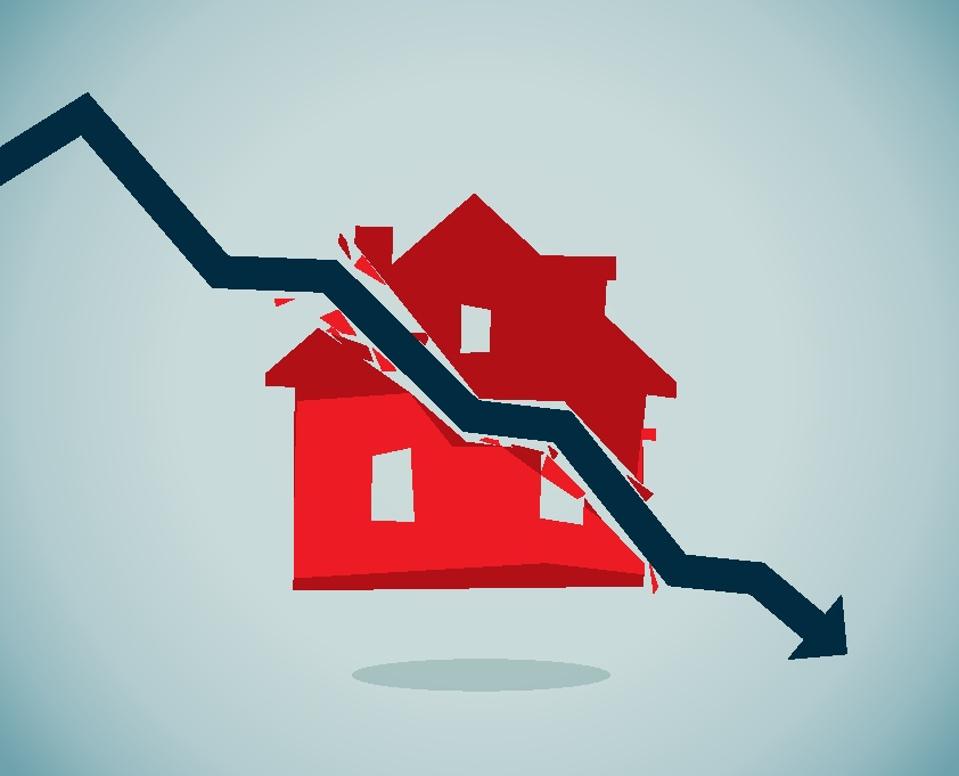Fifteen years ago, the US housing market crisis brought the global economy to its knees and almost 10 million US homeowners either lost or walked away from their properties. Today, the shoe is on the other foot: while the US market appears to be stable, mortgage borrowers and their banks in other countries are heading for stormy weather.
Despite the trauma caused by the 2008/9 crash, there was a silver lining for US consumers. The housing market recovery and rebound happened amid near-zero interest rates, allowing the majority of homeowners and buyers to lock in favorable rates via 30-year fixed-rate mortgages (FRMs.) Because of this, 90% of U.S. households today pay less than current rates on their mortgage.
In fact, for the first time ever, US households are now paying as much interest on other kinds of debt, from credit cards to auto loans, as they are on their mortgages, according to the Bureau of Economic Analysis. Historically, interest payments on mortgages tended to be twice as large as other kinds of debt!
The US residential property market remains stable, with foreclosure filings in 2023 at .026% of all households – the peak level during the Great Recession was nearly 10x higher. There are only two downsides. First, home sales have declined, because owners realize if they sell and buy a new property they will pay significantly more for their new mortgage. And second, many lenders are earning significantly less on their mortgages than they are paying for deposits.
This is the opposite of what is happening in other parts of the world. Most foreign markets have more adjustable-rate mortgages (ARMs) and shorter-duration FRMs than the US, meaning borrowers are far more likely to be hit with interest rate increases.
Stubbornly high inflation is causing central banks to keep rates high. This is delivering a double blow to cash-strapped homeowners who are being squeezed through no fault of their own. It’s also not due to job losses – this could be one of the first times this is happening amid relatively full employment. Instead, a decade of steeply rising housing prices together with sluggish income growth and higher interest rates has caused the house affordability gap to widen markedly over the past three years.
Consumers could, of course, sell their homes, but in most major markets house prices have now stabilized or even dipped, making this an unattractive option. What’s more, rental prices have generally risen due to insufficient housing supply.
In the UK, the household debt-to-income ratio remains elevated (123% as of Q3 2023) and the average two-year fixed mortgage rate rose from 2.38% to 5.79% in just one year. The Financial Conduct Authority estimated, in September 2023, that as many as 770,000 borrowers (about 13% of all mortgage holders based on Accenture’s analysis of Gov.UK data) are either already in arrears or at risk of falling behind in their payments.
Lenders in this and similar markets, like Australia, Canada, Brazil and others, face a real prospect of having large numbers of customers unable to meet their loan repayments and potentially losing their homes. Unlike in the US, most home loans are not securitized and guaranteed by state and quasi-state bodies. The risk is significant.
Unless conditions change soon – with a substantial drop in interest rates – banks will need to consider far-reaching measures. Governments too recognize the potential fall-out of having millions of voters unable to balance their books. So it’s quite likely we will see more of the public-private interventions that rescued large numbers of distressed consumers during the pandemic – and spared lenders of substantial losses. The Canadian government, for example, has already introduced measures to help citizens struggling to meet their mortgage commitments.
Banks will do well to prepare for this kind of collaboration. They should also explore innovative solutions to directly assist their customers. Some banks are already doing this. In the UK, NatWest is developing tailored solutions to help borrowers find a way through these challenges, and the bank stopped all fees and charges for personal mortgage customers facing hardships last year and provided access to specialist financial health and support teams.
As we saw during COVID-19, innovative solutions are often forged in the furnaces of crisis. I believe the same will happen now. Just as the pandemic honed banks’ digital and mobile capabilities, the stress in the housing market will cause banks to rise to the occasion, using data, technology and behavioral economics related approaches to address individual customers’ needs in more relevant and effective ways.
This could be the start of an exciting new era of more personalized and empathetic banking, which will benefit banks as well as consumers in markets throughout the world.

